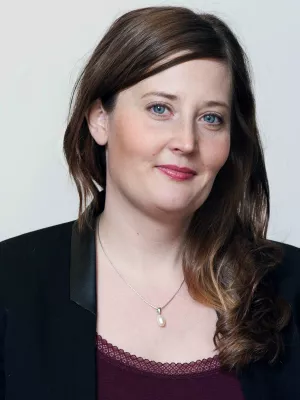
Bodil Gesslein
Visiting research fellow

The effects of variable, intermittent, and continuous negative pressure wound therapy, using foam or gauze, on wound contraction, granulation tissue formation, and ingrowth into the wound filler
Author
Summary, in English
OBJECTIVE: Negative pressure wound therapy (NPWT) is commonly used in the continuous mode. Intermittent pressure therapy (IPT) results in faster wound healing, but it often causes pain. Variable pressure therapy (VPT) has therefore been introduced to provide a smooth transition between 2 different pressure environments, thereby maintaining the negative pressure environment throughout the therapy. The aim of the present study was to examine the effects of IPT and VPT on granulation tissue formation.
METHOD: A peripheral wound in a porcine model was treated for 72 hours with continuous NPWT (-80 mm Hg), IPT (0 to -80 mm Hg), or VPT (-10 to -80 mm Hg), using foam or gauze as wound filler. Wound contraction and force to remove the wound filler were measured. Biopsies from the wound bed were examined histologically for granulation tissue formation.
RESULTS: Intermittent pressure therapy and VPT produced similar results. Wound contraction was more pronounced following IPT and VPT than continuous NPWT. Intermittent pressure therapy and VPT resulted in the formation of more granulation tissue than continuous NPWT. Leukocyte infiltration and tissue disorganization were more prominent after IPT and VPT than after continuous NPWT. Granulation tissue grew into foam but not into gauze, regardless of the mode of negative pressure application, and less force was needed to remove gauze than foam.
CONCLUSIONS: Wound contraction and granulation tissue formation is more pronounced following IPT and VPT than continuous NPWT. Granulation tissue grows into foam but not into gauze. The choice of negative pressure mode and wound filler is crucial in clinical practice to optimize healing while minimizing pain.
Department/s
- Ophthalmology, Lund
- Department of Clinical Sciences, Lund
- Clinical and experimental lung transplantation
- Thoracic Surgery
- NPWT technology
- DCD transplantation of lungs
Publishing year
2012
Language
English
Publication/Series
Eplasty: Open Access Journal of Plastic and Reconstructive Surgery
Volume
12
Links
Document type
Journal article
Publisher
HMP Global Learning
Topic
- Clinical Medicine
Status
Published
Research group
- Clinical and experimental lung transplantation
- NPWT technology
- DCD transplantation of lungs
ISBN/ISSN/Other
- ISSN: 1937-5719

